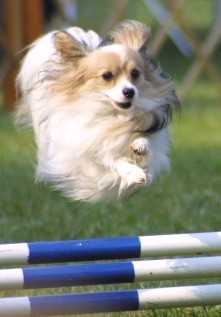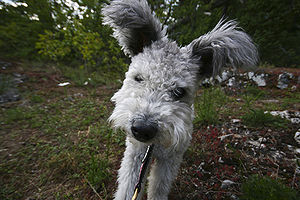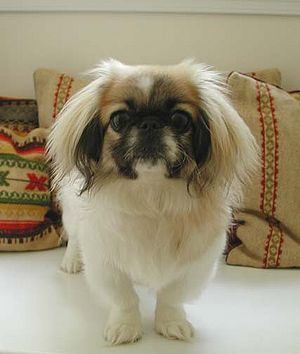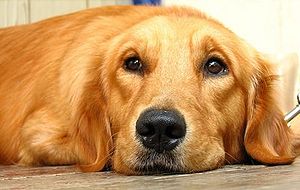 |
| Vital Statistics: |
| Place of Origin: France or Belgium |
| Group: Toy, Companion |
| Height: 8-11 in. |
| Weight: 9-10 lbs. |
| Life span: 14-16 yrs. |
| Trainability: high, except housebreaking |
| Good with children: yes |
| Good with other pets: yes, but take care with large dogs |
What are the origins of the Papillon?
The Papillon, whose origin is France, is descended from the dwarf spaniel often seen in 16th century paintings.It was a highly prized dog in Renaissance Europe, especially Italy and France. A favorite of royalty, the Papillon was an adored pet of Marie Antoinette. The Papillon has been called the Butterfly Dog because of the shape of its ears.
What does the Papillon look like?
The Papillon’s body is fine-boned, about 8-11 inches tall and weighs 9-10 lbs. The small nose is black as are the lips. Eyes are medium size and dark. Ears can be either erect or dropped with rounded tips and are fringed. The long, plumed tail is carried over the body. The coat is full, long, silky and straight with a frilly chest. Color is white with patches of any color. The Papillon should be brushed and combed several times weekly. This dog can have dental problems, so daily brushing of the teeth is recommended.
What is the temperament of the Papillon?
In spite of its size, the Papillon is a lively, curious little dog, very devoted to its owners. As with all small dogs, people tend to let them get away with bad behavior. To avoid this, train your dog with a gentle hand and socialize it early. The Papillon is difficult to housebreak, but be patient and persistent. They are good with children and other pets, but need supervision with large dogs. This energetic, active dog needs daily walks and playtime.
What are the Papillon’s uses?
The Papillon shines in agility and obedience trials. It can be taught to perform tricks. True to its breeding, it remains a loving companion dog.
Possible Health Issues
Dental problems, patellar luxation, seizures, open fontanel (affects skull formation), progressive retinal atrophy, allergies, von Willebrand’s Disease, intervertebral disc disease.
- Affenpinscher
- Brussels Griffon
- Cavalier King Charles Spaniel
- Chihuahua
- Chinese Crested
- Coton de Tulear
- Dachshund
- English Toy Terrier
- Havanese
- Italian Greyhound
- Japanese Chin
- Maltese
- Manchester Terrier
- Mi Ki
- Miniature Pinscher
- Moscow Toy Terrier
- Pekingese
- Pomeranian
- Pug
- Shih-Tzu
- Silky Terrier
- Toy Fox Terrier
- Xoloitzcuintli
- Yorkshire Terrier
- Alaskan Klee Kai
- Bichon Frise
- Bichpoo
- Brussels Griffon
- Bull Terrier
- Bulldog
- Cardigan Welsh Corgi
- Cavalier King Charles Spaniel
- Chihuahua
- Chinese Crested
- Coton de Tulear
- Eurasier
- French Bulldog
- German Spitz (Giant, Standard, Toy)
- Hairless Khala
- Havanese
- Japanese Chin
- Japanese Chin Dog
- Keeshond
- Lhasa Apso
- Lowchen
- Maltese
- Mi Ki
- Miniature Pinscher
- Moscow Toy Terrier
- Norwegian Lundehund
- Pekingese
- Pomeranian
- Poodle
- Portuguese Water Dog
- Pug
- Sanshu
- Schipperke
- Schnorgi
- Shiba Inu
- Shih-Tzu
- Tibetan Spaniel
- Yorkshire Terrier



